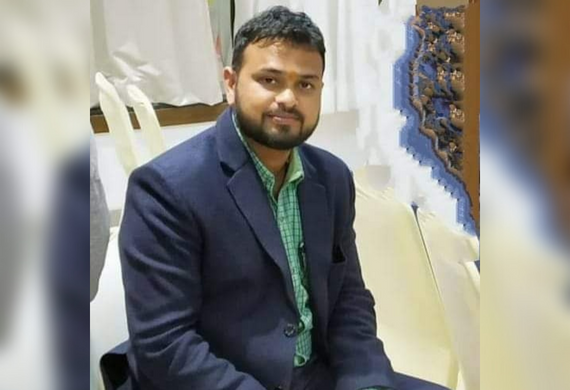
Microfinance an Apt Tool to Empower Rural Women believes Financial Inclusion Specialist Vikas Singh
By: WE Staff | Wednesday, 25 January 2023
Rina Devi procured a Rs 40,000 from the Bargadwa branch of Sugamya Finance in Gorakhpur, Uttar Pradesh. Coming from a financially weak background, she was unable to provide proper education to her child. Soon after taking a loan, she arranged for sewing training and began stitching clothes.
Today, Rina Devi runs a successful garment business which has improved her financial position significantly. Rina Devi has also managed to pull her family out of a crisis as resources had started drying up when her husband stopped getting work as a daily wage earner. With the income she generates, not only is she ensuring her child’s education, but has also provided employment to two more people through her business.
This is the kind of transformation that can be facilitated by micro-finance accessibility.
New Delhi based Sugamya Finance is one such organization that makes credit accessibility easier for Indians. The company offers 3 major financial services including MSME loans, micro loans (IGL & BL) and consumer durable loans.
So far, it has empowered more than 60,000 households through its network presence of 80 branches in 40 districts across 9 states. Sugmya has been instrumental in bringing a shift in the mindset of these families. Underlining the role of microfinance, the loan options provided by the company helps promote self- employment and enables women to make their own financial decisions.
Vikas Singh, Co- Founder & CEO, Sugmya Finance Pvt Ltd is a pioneer in rural finance and financial inclusion. With more than 16 years of hands-on experience in the microfinance industry, he has contributed significantly in enabling Sugmya realize its vision of creating financial opportunities and enabling livelihoods for all.
As a seasoned micro finance professional, his passion and expertise in driving financial inclusion and digitisation in the rural economy plays a crucial role in the growth journey of the company.
In a conversation with team Women Entrepreneur Vikas breaks down the many ways in which microfinance empowers women. He also sheds light on the future of the microfinance industry in India.
Financial inclusion of women in India has been on a steady incline, however they still lag behind men when it comes to using credit. In your opinion how deep does this problem run?
Social and patriarchal norms play a large role when it comes to providing access to financial services. It is imperative that women are promoted and supported with an increased focus on equality through education and productive employment. As per IBEF (India Brand Equity Foundation), 20.37 percent of women are MSME owners and make up 23.3 percent of the labor force in India. This means that unless women are not encouraged to pursue entrepreneurship, our economic progress would remain incomplete and impossible.
Sugmya is actively involved in raising awareness with regards to finance, health and overall well-being in rural areas. As a practice, we conduct digital literacy workshops and provide financial knowledge on a routine basis. We also spread social awareness by organizing nataks and other programmes in villages.
What are some factors that have kept women away from leveraging financial products so far?
One of the first challenges in empowering people is not that of financial service delivery, but navigating a particular mindset regarding women’s participation in the workforce. Moreover, access to technology, awareness and literacy are some of the contributing factors, especially among rural women. This highlights the need for both financial and digital literacy. This will not only address women’s fears and inhibitions around banking and microfinance, but also give them confidence to become active bank customers and entrepreneurs.
What are some ways in which women’s growth lags behind when they have limited or no access to east credit?
Supportive conditions are necessary for promoting the participation of women in entrepreneurial activities. Firstly, financial institutions must work on actively engaging with women entrepreneurs and understanding the specific needs and challenges that women-led enterprises face. Findings suggest that women are more likely to borrow when a female agent is assigned to them. Additionally, some women face restricted mobility which limits their access to financial services. Increasing proximity to banks will enable women to easily open a bank account. Focusing on such socio-cultural factors will go a long way in extending credit access to women effectively.
Moreover, accelerating the use of mobile phones and internet among women can also greatly impact financial inclusion. When you improve women’s access to owning a smartphone, you bring them closer to India’s digital payments ecosystem and also enhance the credit worthiness of women-led businesses. Several financial and digital literacy initiatives are already driving technology adoption among rural women and expanding their access to credit.
Throw some light on how Sugmya Finance’s services are empowering consumers, especially women in gaining access to credit. How has the company made it easier for women to access MSME loans and micro-loans?
Sugmya Finance was built with a vision of creating a social impact through a diverse range of tech operations, e-clinics and loan options like MSME loans, micro loans and consumer durable loans. When interacting with customers, Sugmya employees have been trained to put the vision and mission of the company at the forefront. This is also the driving force behind designing affordable products for the upliftment of vulnerable and unbanked women in rural areas. Starting small businesses and participating in the labor force is helping rural women become independent at various levels and also leading the way for families to step out of the poverty line. Not only does it lead to women empowerment, but also influences financial inclusion and drives sustainable economic growth for Bharat.
Sugmya has touched the lives of as many as 60,000 women across India since its inception. Our staff has served close to 65,000 families across 9 states and taught numerous women to register their signatures.
By enabling rural women to start and expand their businesses, we help them increase their financial awareness, save up for their children’s education, become responsible for their family's financial wellbeing and build an innate sense of achievement. Ultimately, it is women-led development that will pave way for a self-reliant Bharat, as India cannot have an Atmanirbhar Bharat without making our women Atmanirbhar.
Indian Microfinance industry has been growing at a CAGR of 22.2 percent over a period of past five years. What is your take on the industry’s growth? What factors have contributed towards driving this growth?
The microfinance industry has proven to be a valuable tool for providing comprehensive financial services. It has adapted itself well to the technological changes in banking and finance. This has enabled NBFCs and MFIs to create a customer-centric approach for improving service delivery for the unbanked and underserved population. Digital technology as a growth driver empowers customers to not only have better access to credit, but are also able to avoid risks of cash-based transactions and repay loans easily. Finally, a combination of automated processes and increased connectivity through branch network expansion are making the loans process simpler and promoting inclusive economic growth.
How do you foresee the Indian microfinance industry evolving in the near future? Which emerging market trends will create the most significant impact on the said industry?
Over the last few years, MFIs have made rapid advancements in both client outreach and loan portfolio. The future of microfinance is bright in India due to a rising demand of small-ticket loans from a large consumer base. New technological innovations will play a crucial role in enabling the industry to provide new offerings and tools for poverty reduction, women empowerment and financial inclusion. In addition, MFIs are continuosly exploring new channels to reach and interact with customers. Whether its the expansion of agent network or remote customer onboarding processes, this trend will continue to lower costs and increase efficiency of lenders.
What is Sugmya Finance’s roadmap for the future?
Sugmya Finance has over 100 operational branches across India and we are planning to increase to 200 by March 24. While we started providing MSME loans this year, from next FY we are aiming at offering secured loan products to our customers as well. This year we are on our way to achieving 300 crore AUM with a target of 1000 AUM by next FY. Also, in a new social initiative to improve healthcare access in rural communities, we have collaborated with Aiqa health (a heathcare startup) to launch e-clinics offering a variety of services to patients across 40 locations. This includes comprehensive health checks, on-call consultations with qualified doctors, lab tests at nominal fees, and the provision of medicines at subsidised prices to meet the healthcare needs of patients.






